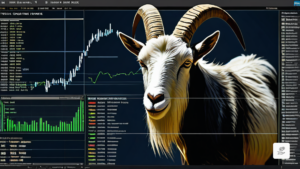Unveiling the Enigma of Slippage in Forex Trading

Deciphering Slippage: The Unseen Force in Forex Trading
In the realm of forex trading, slippage emerges as a subtle yet impactful phenomenon that can sway the fate of trades. It refers to the elusive divergence between the anticipated price and the price at which a trade is ultimately executed, a discrepancy that can leave traders bewildered or elated.
The Elusive Nature of Slippage
Slippage manifests itself in the fleeting moments between the placement of a trade order and its execution. During this ephemeral interval, market dynamics can shift unexpectedly, leading to an execution price that may deviate from the trader’s expectations. This deviation can be favorable, granting the trader a better price than anticipated, or unfavorable, resulting in a less desirable execution price.
Minimizing Slippage: A Strategic Endeavor
While slippage is an inherent aspect of forex trading, there are strategic maneuvers that astute traders can employ to mitigate its impact. One such strategy involves embracing limit orders over market orders. Limit orders empower traders to specify the precise price at which they wish to execute their trades, thereby safeguarding against unfavorable slippage.
Navigating Market Volatility: A Path to Success
Another prudent strategy involves avoiding trading during periods of heightened market volatility. Major economic events and geopolitical upheavals can trigger sharp price fluctuations, increasing the likelihood of slippage. By steering clear of these turbulent waters, traders can enhance their chances of executing trades at more favorable prices.
Embracing Liquidity: A Haven from Slippage
Liquidity plays a pivotal role in minimizing slippage. Highly liquid currency pairs, such as EUR/USD and USD/JPY, tend to exhibit lower levels of slippage under normal market conditions. These currency pairs boast ample trading volume, ensuring that orders can be executed swiftly and efficiently, reducing the risk of significant price deviations.
Real-World Examples: Illustrating Slippage in Action
To further illuminate the concept of slippage, let’s delve into a few real-world examples. Imagine an order placed for XAU/USD at $1791.67. Due to sudden market fluctuations, the order is executed at $1791.92, resulting in an unfavorable slippage of $0.25 per contract. Conversely, an order for US30 at $32867.70 that is filled at $32872.90 exemplifies a negative slippage of $1.50 per contract.
Conclusion: Embracing Slippage as a Trading Reality
In the intricate world of forex trading, slippage is an unavoidable reality that traders must navigate with skill and strategy. By employing limit orders, avoiding volatile market conditions, and seeking out liquid markets, traders can effectively minimize the impact of slippage on their trading outcomes. Embracing slippage as an inherent aspect of trading empowers traders to make informed decisions and navigate the markets with greater confidence.




